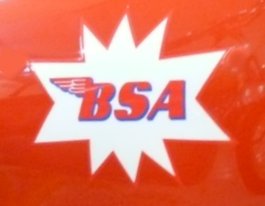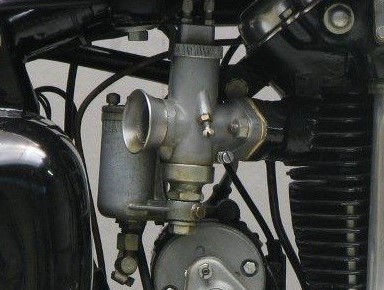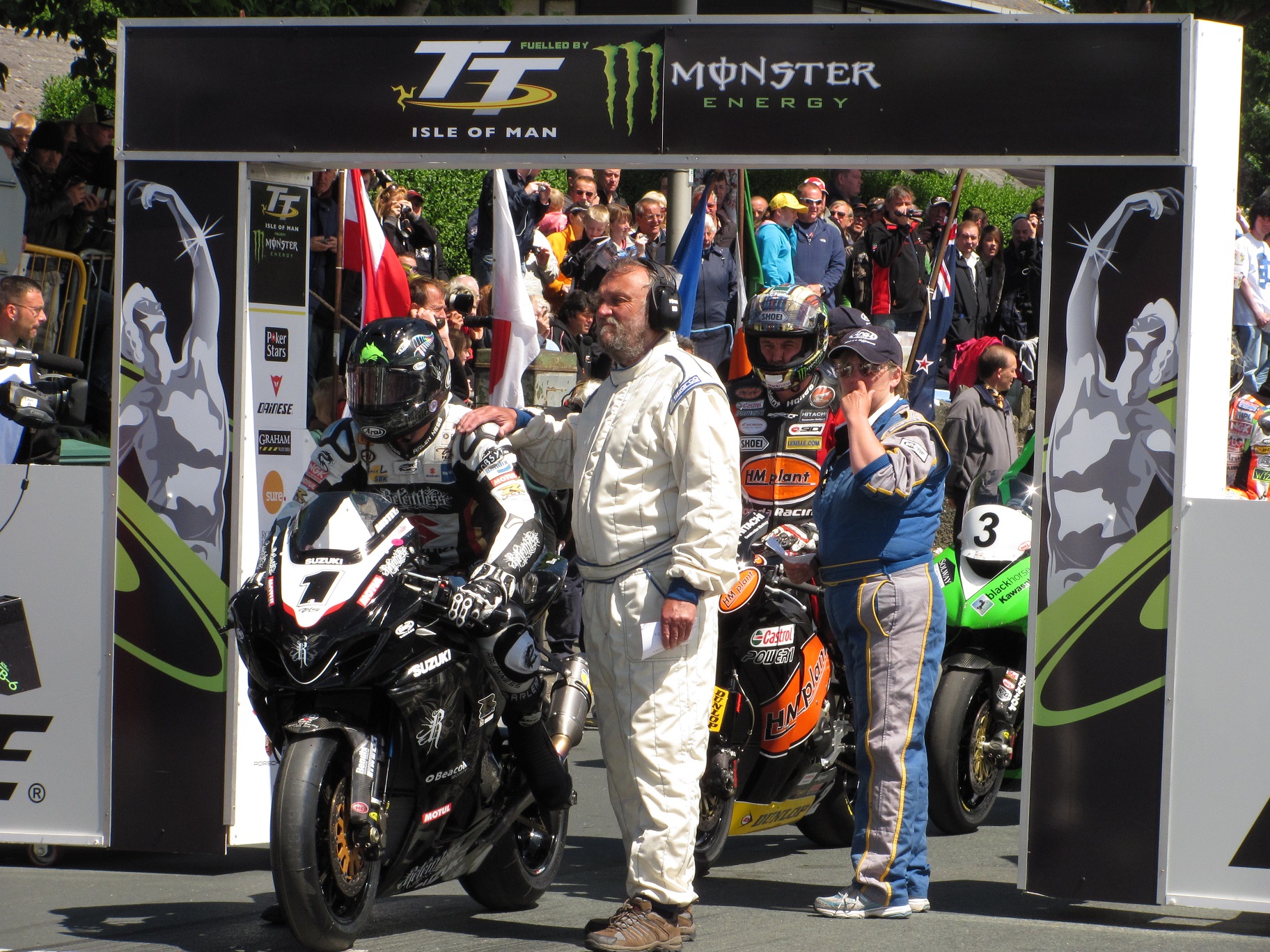|
BSA Spitfire
The BSA Spitfire is a high-performance BSA motorcycle made from 1966 to 1968 with model designations of MkII, MkIII and MkIV. Announced at the Brighton motorcycle show held during September 1965, it was based on the earlier BSA Lightning with a power-upgrade achieved by higher compression-ratio 10.5:1 pistons and two large-bore Amal GP carburettors with velocity stacks Motor Cycle, 21 April 1966. ''Road test'' Accessed 2013-06-28 it was one of the first BSAs to have 12-volt electrics. At introduction in 1966, it was the fastest standard BSA ever produced and the fastest standard motorcycle tested by Motor Cycle with a best run at 123 mph and average of 119.2 mph The Spitfire was used for travelling Marshalls' course duties at the 1967 Isle of Man TT races. Development Spitfire Mark II The first A65S Spitfire of 1966 was confusingly designated ''Mark II'' and had a number of new features including two-way damped front forks, Girling shocks and a brace between th ... [...More Info...] [...Related Items...] OR: [Wikipedia] [Google] [Baidu] |
Snaefell Mountain Course
The Isle of Man TT Mountain Course or ''TT Course'' is a street and public rural road circuit located in the Isle of Man, used for motorcycle racing. The motorcycle ''TT Course'' is used principally for the Isle of Man TT Races and also the separate event of the Isle of Man Festival of Motorcycling for the Manx Grand Prix and Classic TT Races held in September of each year. The start-line for the Isle of Man TT Mountain Course is located on Glencrutchery Road in the town of Douglas, Isle of Man.Daily Express page 38 Friday 7 September 1979 The clockwise course has a lap of , from the start line at the TT Grandstand on Glencrutchery Road ( A2 Ramsey to Douglas) in the island's main town of Douglas. After negotiating urban streets, the racing circuit turns right to leave Douglas at Quarter Bridge, then proceeds along the A1 Douglas to Peel road through the villages of Braddan, Union Mills, Glen Vine, Crosby, and Greeba. The course then turns right at Ballacraine on to the ... [...More Info...] [...Related Items...] OR: [Wikipedia] [Google] [Baidu] |
BSA Hornet
The BSA Hornet is a British motorcycle made by Birmingham Small Arms Company, BSA at their factory in Birmingham for export to the US between 1964 and 1965. Development The BSA Spitfire Hornet ('64-'65) and Hornet ('66-'67) (and the 500cc BSA Wasp) were developed by BSA in 1964 as purpose built off road and desert racer motorcycles in response to demand from the US market for a 'stripped down' BSA Lightning with more power. Although they could be used on public roads, BSA Spitfire Hornets and Hornets were supplied without headlights or taillights, with 'straight through' exhaust pipes; high pipes (east coast model) and low TT pipes (west coast model) and twin carburettors. The 6 volt coil 'ET' (energy transfer) ignition system was designed to include easy conversion to add lights for road use but the exhaust pipes needed to be fitted with mufflers to become road legal. The 'Mandarin Red' Spitfire Hornet ('64-'65) was further upgraded in 1965 with a more positive gear selector ... [...More Info...] [...Related Items...] OR: [Wikipedia] [Google] [Baidu] |
BSA A65 Rocket
The BSA A65R Rocket was one of a series of unit construction twin cylinder Birmingham Small Arms Company (BSA) motorcycles made in the 1960s. A version branded as the A65 'Thunderbolt Rocket' was aimed at the US market. The A65R Rocket was produced from 1964 but was stopped in 1965 when all development at BSA was halted by financial difficulties. Development The A65R was a development of the old model range led by Bob Fearon, Managing Director and General Manager of BSA and Chief Development Engineer Bert Perrigo they developed the unit construction ''Star twins''. To make the A65R more of a 'sports version' of the original BSA A65 Star (and in anticipation of more stringent noise control legislation) it was given 'siamesed' 2 into 1 exhaust pipes with a special baffle, as well as chrome plated mudguards and headlight brackets. Able to cruise at 85 mph (137 km/h) and with a top speed of 108 mph (174 km/h) it was sold as the fastest BSA in production. A special versi ... [...More Info...] [...Related Items...] OR: [Wikipedia] [Google] [Baidu] |
BSA Lightning Rocket
The BSA Lightning Rocket was a Birmingham Small Arms Company (BSA) motorcycle made in Birmingham. A highly-tuned version of the BSA A65R Rocket, it was BSA's bid to capture the potentially lucrative USA export market in the mid-1960s. Twin Amal 389/206 carburetors and high-compression pistons, combined with an optional close-ratio gearbox, gave lively acceleration. Sharing many A65 cycle parts, the Lightning Rocket had a slimmer fuel tank and mudguards, with additional chrome. From 1965, the A65 was discontinued in the UK and the BSA A65L Lightning became the main BSA production twin. See also * BSA Royal Star * BSA Spitfire The BSA Spitfire is a high-performance BSA motorcycle made from 1966 to 1968 with model designations of MkII, MkIII and MkIV. Announced at the Brighton motorcycle show held during September 1965, it was based on the earlier BSA Lightning with a ... References {{BSA motorcycles, state=collapsed Lighting Rocket Standard motorcycles Motorcycles ... [...More Info...] [...Related Items...] OR: [Wikipedia] [Google] [Baidu] |
Heat Sink
A heat sink (also commonly spelled heatsink) is a passive heat exchanger that transfers the heat generated by an electronic or a mechanical device to a fluid medium, often air or a liquid coolant, where it is dissipated away from the device, thereby allowing regulation of the device's temperature. In computers, heat sinks are used to cool CPUs, GPUs, and some chipsets and RAM modules. Heat sinks are used with high-power semiconductor devices such as power transistors and optoelectronics such as lasers and light-emitting diodes (LEDs), where the heat dissipation ability of the component itself is insufficient to moderate its temperature. A heat sink is designed to maximize its surface area in contact with the cooling medium surrounding it, such as the air. Air velocity, choice of material, protrusion design and surface treatment are factors that affect the performance of a heat sink. Heat sink attachment methods and thermal interface materials also affect the die temperature of ... [...More Info...] [...Related Items...] OR: [Wikipedia] [Google] [Baidu] |
Zener Diode
A Zener diode is a special type of diode designed to reliably allow current to flow "backwards" (inverted polarity) when a certain set reverse voltage, known as the ''Zener voltage'', is reached. Zener diodes are manufactured with a great variety of Zener voltages and some are even variable. Some Zener diodes have a sharp, highly doped p–n junction with a low Zener voltage, in which case the reverse conduction occurs due to electron quantum tunnelling in the short space between p and n regions − this is known as the Zener effect, after Clarence Zener. Diodes with a higher Zener voltage have a more gradual junction and their mode of operation also involves avalanche breakdown. Both breakdown types are present in Zener diodes with the Zener effect predominating at lower voltages and avalanche breakdown at higher voltages. They are used to generate low-power stabilized supply rails from a higher voltage and to provide reference voltages for circuits, especially stabilized powe ... [...More Info...] [...Related Items...] OR: [Wikipedia] [Google] [Baidu] |
Motorcycle Mechanics (magazine)
''Motorcycle Mechanics'' (Motorcycle, Scooter and Three-Wheeler Mechanics, also known as ''MM'') was a British monthly magazine founded in 1959 under Mercury House Publications. With the strapline "The illustrated how-to-do-it magazine", it initially concentrated on the practicalities of owning motorcycles as a domestic form of transport with a focus on home maintenance and repairs. Published between 1959 and 1983, many copies carried the announcements: ''World's largest sale'' and ''Largest sale''. When founding-editor Robert F Webb moved on in early 1962, successor editor Charles E Deane's message in June 1962 proudly proclaimed that, in three years from a new start, they had achieved the world's largest net sale of any motorcycle magazine. As with other motorcycling periodicals, MM moved with the times, changing its name and format to suit readership requirements and fashion and technology advancements, along with a change of ownership in 1974. In 1972 the masthead was ref ... [...More Info...] [...Related Items...] OR: [Wikipedia] [Google] [Baidu] |
Harley Davidson Sportster
The Harley-Davidson Sportster is a line of motorcycles produced continuously since 1957 by Harley-Davidson. Sportster models are designated in Harley-Davidson's product code by beginning with "XL". In 1952, the predecessors to the Sportster, the Model K Sport and Sport Solo motorcycles, were introduced. These models K, KK, KH, and KHK of 1952 to 1956 had a sidevalve ('flat head') engine, whereas the later XL Sportster models use an overhead valve engine. The first Sportster in 1957 had many of the same details of the KH including the frame, fenders, large gas tank and front suspension. The original Sportster line was discontinued in Europe in 2020 because the engine failed to meet the stricter Euro 5 emissions standards. An all-new model, called the Sportster S and equipped with the Revolution Max engine, was introduced in 2021. It was the first motorcycle under the Sportster nameplate to receive a new engine since 1986, and the first Sportster to have an engine not derived from ... [...More Info...] [...Related Items...] OR: [Wikipedia] [Google] [Baidu] |
Amal Concentric
AMAL was a British engineering company servicing the motorcycle and other light-engineering motor industries between 1927 and 1993Amalgamated Carburetters Grace's Industrial Guide. Retrieved 2013-07-09 based in . AMAL is a British trademark. Amal was the supplier of carburettors to many marques within the British motorcycle industry including the largest of British manufacturers, such as [...More Info...] [...Related Items...] OR: [Wikipedia] [Google] [Baidu] |
Isle Of Man TT
The Isle of Man TT or Tourist Trophy races are an annual motorcycle racing event run on the Isle of Man in May/June of most years since its inaugural race in 1907. The event is often called one of the most dangerous racing events in the world as many competitors have died. Overview The Isle of Man TT is run in a time-trial format on public roads closed to the public by an Act of Tynwald (the parliament of the Isle of Man). The event consists of one week of practice sessions followed by one week of racing. It has been a tradition, perhaps started by racing competitors in the early 1920s, for spectators to tour the Snaefell Mountain Course on motorcycles during the Isle of Man TT on Mad Sunday, an informal and unofficial sanctioned event held on the Sunday between Practice Week and Race Week. The first Isle of Man TT race was held on Tuesday 28 May 1907 and was called the International Auto-Cycle Tourist Trophy. The event was organised by the Auto-Cycle Club over 10 laps o ... [...More Info...] [...Related Items...] OR: [Wikipedia] [Google] [Baidu] |
Amal GP
AMAL was a British engineering company servicing the motorcycle and other light-engineering motor industries between 1927 and 1993Amalgamated Carburetters Grace's Industrial Guide. Retrieved 2013-07-09 based in . AMAL is a British trademark. Amal was the supplier of carburettors to many marques within the British motorcycle industry including the largest of British manufacturers, such as [...More Info...] [...Related Items...] OR: [Wikipedia] [Google] [Baidu] |







